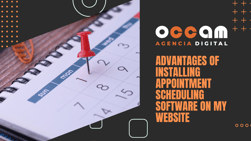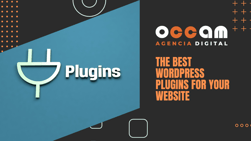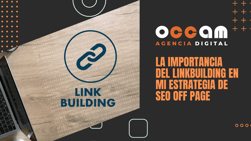Index Content
Creating websites for SMEs and freelancers is not about clicking a button, opening a window in WordPress and decorating it in any way. Web development means building and maintaining websites, with an impeccable appearance, good performance and fast operation, which directly improves the user experience.
It is the result of a planned, studied and bomb-proof work by professional developers. It is not just creating, it is thinking and developing a process by which the client's needs are analysed, with a unique user experience (UX) and design.
do you have an idea in mind, are you ready to make it a reality? Join us to discover the solution that most SMEs and freelancers are currently opting for.
Remembering web development with WordPress
Web development, both for SMEs and freelancers, is responsible for the internal functions and features of a website, i.e. the content, the database, the operating systems, etc. This is how interaction with your website visitors is achieved.
In addition, it is also responsible for the correct use of programming tools, especially when there is a problem with the page. The most commonly used are: JavaScript, XML and SQL, although new ones are being developed to meet the user's requirements.
Whether you are a freelancer, small business, SME or large multinational, WordPress is a versatile platform that adapts to any business and web project. Believe us when we tell you that the development of websites based on a content management system such as WordPress is worthwhile.
Reasons that support its popularity:
- It is backed by a secure team.
- It is intuitive, easy to use and fast loading.
- It fits perfectly with multimedia files of all kinds.
- It is constantly updated with new enhancements.
- It's open source, so you have more freedom to do what you want with it.
- You can customise it and make designs to your liking.
- It takesSEO positioning into account through keywords and meta tags, among other options.
- And in a few weeks, you will have your website ready.
No wonder it has more than 76 million pages all over the world.
It is important to clarify that some tools are used in HTML and CSS format by both designers and developers.
Web design VS Web development, don't confuse the two!
Almost everything you see on the internet is based on good web design and development, but nobody makes it easy for you, do they?
In general, most development professionals base their work systems on general methodologies, with functionalities that sound like Chinese and with an unaffordable price. It's time to clear up all your doubts about web design and web development. They are not the same:
- While web design refers to the appearance of the page (aesthetics, logo, design, graphics, colour...), development focuses on the internal functions.
- Design depends on the attention captured by visitors, while development depends on the solutions to the problems of the website, among other things.
- The former uses design-based tools such as PhotoShop, while the latter uses programming techniques and systems - JavaScript is a good example.
With custom web development, the developers will be your elves - you will never see them, but they will always be there to make the site work quickly and efficiently.
The hardest part is getting the initial approach right: strategy, slogan, style, how to convert the user into a customer.... It depends on what you are looking for.
if you are a company that needs a differentiated online presence, or a freelancer that needs to make yourself known and increase your visibility, stay, because this is the place for you!
Steps prior to the development of your website: what you should not forget
take note, but don't panic, because your Project Manager will be with you throughout the whole process:
- Prepare the briefing, which is nothing more than a sketch of what you need to advertise on the Internet (objectives, ideal client, specific needs, style, budget, etc.). Together, we will review each product or service, we want to quickly capture the essence of your business.
- Proposal of 3 designs in pdf, so you can get an idea of how the design of the homepage and two internal pages will look like.
While we work on these points, we will ask you to write the services of your company: What do you tell your customers? Who are you? What makes you different from the competition?
We won't start building your website without these steps for one simple reason: your content is the seed we grow to harvest a strong and healthy website.
We know this part can be a bit more expensive, but it's worth it.
want a great website? Find it in Fuenlabrada
Let's go a little deeper into these steps. Times have changed and we are going to show it to you through 6 simple steps that everyone should know when creating a website:
- Define the objectives of the website.
what do you want to achieve with it? Are you an eCommerce? Are you a service website? Having clear objectives will help us to know what kind of website you need for your business.
For example, if what you want is a website that does not need to update its contents frequently or edit its code, the ideal is to create a static website. If what you want is to create a blog to publish content on a regular basis, it will be better to create a dynamic website. It is more complex, but it can be fed with the data stored in the databases.
At this point it is also important to think about the type of development that suits you:
- If your only objective is to appear on the internet, a static website will suit you perfectly.
- If you want to expand your presence, you can add more pages with more information and update them by installing a content management system or CMS.
- If you are a company looking to attract customers, it will not be enough to include your email address, you also need to plan a digital marketing strategy.
- If you want to go beyond a simple corporate website, it is important to be clear about the range of users you will reach with your website.
If your business needs to manage and administer the website and content on a regular basis, the best option will be a CMS like WordPress. It's easy and simple, and you can use it even with very basic programming skills or limited office skills. For a business with these needs, development in HTML, CSS and JavaScript might be too complex.
- Prepare a mockup and wireframe.
Take a sheet of paper and start writing down everything that comes to your mind. The mockup is a draft of the pages and the general structure of the website. In it you can define the main pages, how they will be navigated between them, etc.
You don't need to give too many details, that's the designer's job, but if you have knowledge of wireframing, great, you can do it yourself to move on to the digital model.
Before defining the structure of your page, remember the basic elements for navigation: header (generally, it contains the logo and clicking on it takes you to the home page), menu (it is essential that it is visible), content (everything you place between the header and the footer, whether text, images, infographics or other elements) and footer (the lower part of the web, where the content of less importance to the user appears).
- Web design.
do you already know what the interaction of the website is going to be like? Well, it's time to get down to work with the design and leave it in the hands of professionals so that it looks fantastic. Don't think that web design is just about colour, style and other elements that you can see at first glance. It goes much further and must respond to the needs of UI (interface design), UX (user experience) and IxD (design or interaction).
- Development of the web pages.
Here comes the most complex part, where the project we have planned is developed. It is the time to write the code. The developer or developers come into action, it all depends on the complexity and urgency with which you need the final result. And, of course, do not forget to be Mobile friendly, any SEO expert will recommend you to start with the mobile design and will emphasize on being a responsive website.
- Testing.
Do a quality control whenever you finish a phase, because it will help you to improve the level of design and usability. Don't make the mistake of testing only when you finish the development of the pages. And be prepared to correct everything that is necessary before the final launch.
- launching the website!
have you reviewed all the previous steps? Are you ready to take your project out of the oven? Have you prepared a press release to make the moment more spectacular? Take off!
The only thing left to do is to upload your website to the Internet, for which you can hire a hosting, which is nothing more than the house where your website will live. The transfer will be done delicately so that -after all the development and care- you can have it available for all the users.
Websites for freelancers, websites for SMEs... It doesn't matter at Occam Agencia Digital.
come to Fuenlabrada and meet us if you have decided to create a website for your business!




